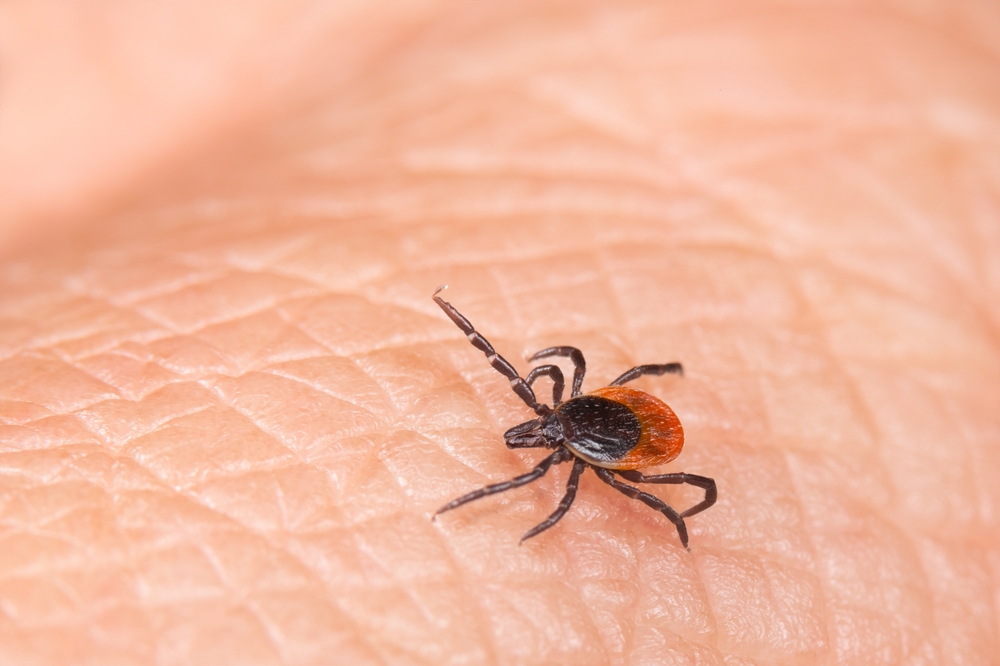Travelling the green road: How to limit the environmental impact of your caravan
Now that the summer months are here and we’re spending a lot of time outdoors and travelling in our caravans, it’s worth getting the lowdown on one of nature’s more unwelcome hitchhikers - the tick. These tiny, spider-like creatures are most active in the warmer months, particularly between May and October, and while they may be small, they can cause you some big problems if you’re not careful. Let’s have a look at why they get a (rightful) bad rap…
Where can ticks be found, and when?
Ticks are eight-legged little parasites that suck the blood from other animals and humans. They thrive in warm, humid environments, which is why you’re more likely to encounter them during late spring and summer. They tend to lurk in any type of long grass, woodland areas, and even in overgrown gardens - basically, anywhere with vegetation and potential animal hosts such as deer or pets. If you’re out hiking, camping, walking the dog or even enjoying a picnic in the park, you could easily brush past some without even noticing.
They don’t fly or jump - they just climb or drop onto you when you get close to them.
Lovely (and lazy, one might suggest).

What do they do to humans?
Annoyingly, ticks feed on the blood of animals and humans. They attach themselves by biting through the skin and then can remain latched on for several days as they feed. A tick bite itself isn’t usually painful, so many people don’t notice one until they spot the tick on them, or experience symptoms later. Not every tick bite leads to illness, but some can transmit serious infections, with the most well-known being Lyme disease, and the (thankfully) less-rare tick-borne encephalitis.
What’s Lyme disease?
Lyme disease is a bacterial infection spread to humans by infected ticks. Early symptoms can include a distinctive circular rash (often described as a spreading ‘bullseye’ pattern), fatigue, headaches, muscle or joint pain, facial drooping and a fever. If left untreated, Lyme disease can lead to more severe health issues such as nerve pain, heart problems, and long-term joint inflammation.
The rash at the site of the tick bite typically develops 3 to 30 days after being bitten, and the other early symptoms typically develop around 1 to 4 weeks after being bitten.
There are around 1,500 laboratory-confirmed cases of Lyme disease in England and Wales each year, although an estimated 1,000 to 2,000 more people are diagnosed each year based on clinical assessment as well.
Early diagnosis is key, and most cases can be treated successfully with a course of antibiotics. If you suspect you’ve been bitten and develop flu-like symptoms or a rash, it’s best to speak to your GP promptly.
It goes without saying, but it’s important to remove any ticks off of your body as soon as you can.
In terms of dogs and cats, they can also get Lyme disease, although it’s less common in cats. Symptoms would include loss of appetite, fever, lameness, swollen joints to name just a few - so if you see any of these in your pet, it's best to get to the vet as soon as you can for some antibiotics. Also, as a preventative measure, use an appropriate tick prevention treatment for your animal.

What we can do to stay safe…
The good news is that with a bit of preparation, you can reduce your risk of getting bitten. Here are some important tips for staying safe:
Dress sensibly
Wear long sleeves and trousers when walking through grassy or wooded areas. You can tuck your trousers into your socks if you’re really going for it!
Use a decent insect repellent
Insect repellents containing DEET can help to deter ticks.

Stick to the path
Try to stick to clearly defined paths when you are out walking and try to avoid brushing against vegetation where ticks might be present.
Check yourself, others and your pets
After spending time outdoors, and before going back to your caravan, do a full body check, especially around the ankles, armpits, groin, and behind your knees. Don’t forget to check your pets, too!
Remove any ticks properly and promptly
If you find a tick, use a tick removal tool or some fine-tipped tweezers to gently pull it out, making sure not to squeeze or twist the body. Essentially, you want it out whole. Clean the area with antiseptic afterwards to help prevent an infection.

While the prospect of being bitten by a tick might sound alarming, they shouldn’t stop you from enjoying the great outdoors in your caravan this summer, both here and abroad. Studies in Europe estimate that only 1-5% of tick bites can lead to Lyme disease, which is fairly low when you think about it.
A bit of knowledge and vigilance goes a long way in keeping you and your loved ones safe, here, however, so remember our top tips and you shouldn’t go far wrong.







